In the center of Patan, at the Intersection of its main crossroads is the medieval Palace square, locally known as Mangal Bazaar for its Sanskrit connotation of being auspicious, or simply as “Mangah” its root in Old Newari meaning "Center".
In this complex, for more than two centuries the dynasty of the late Mallas held the privilege to embellish the square with the impressive choice of other monuments, pillars, and minor shrines.
Although some of the palace's earlier history is lacking in evidence and conclusive detail and the existing inscriptions are shrouded in the obscure devotional language its past is not "unknown" to the people of Patan. It is full of legend and myth, often with a different version of the same story or two conflicts in one. The Palace area must have already been a center of royal power during, the first millennium as testified on a stone inscription (date 643 AD) in the main courtyard (Keshav Naryan chowk ) of Museum, and another inscription ( date 560 AD ) at Manidhara , next just to the north of the Museum.
Another myth of this complex, a small river once was flowing along what is now the palace front. It is still underground as a stormwater and sewer drain since Malla times. A Buddhist monastery was built on its bank where a bright flame had auspiciously emanated from the waters. In a later time, the monastery was shifted to another location to make space for an extension of the Palace. So every year during the holy month of Gunla (Aug- Sep) a Buddha image is immersed in the consecrated water of a copper vessel placed directly in front of the Golden Door and worshipped by the faithful.
In 1630 AD the Palace was called "Chaukot", denoting a castle or fort with four towers, the built recollection of which are the two surviving tower pavilions at the corner of Palace's front wing.
The existing palace is the work of King Vishnu Malla dated 1734AD. During the ancient period, there was a fort in that settlement. Thus, the historicity of the palace can be traced a long time back. The first mention of “Chaukot” in a historic document is from the time of King Siddhinarasimha Malla in 1630 AD. The palace was renovated by King Srinivas Malla in 1674 AD and also by Vishnu Malla in 1734 AD. Since 1997 AD Medieval Patan Royal Palace is transformed into the Patan Museum.
Source: www.patanmuseum.gov.np'
1855
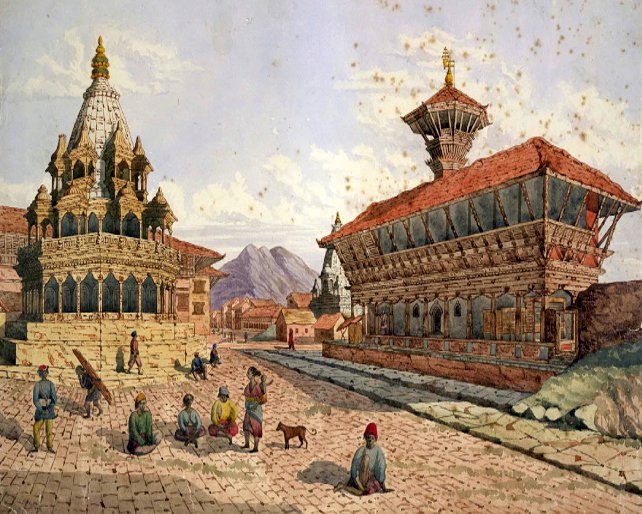
A view of Patan Durbar Square from the west in 1855 A.D.
Source: www.digitalarchaeologyfoundation.com
1863
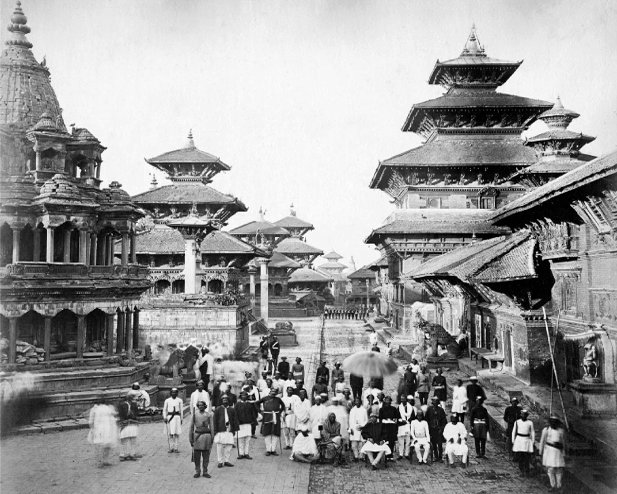
A view of Patan Durbar Square from the south in 1863 A.D.
Source: www.digitalarchaeologyfoundation.com
1870
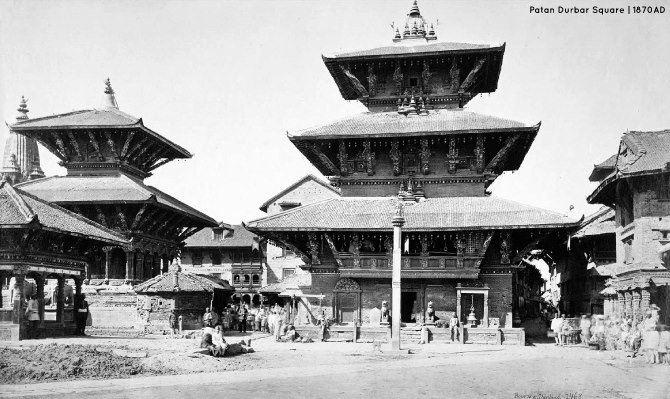
A view of Patan Durbar Square from the east in 1870 A.D.
Source: www.digitalarchaeologyfoundation.com
1883
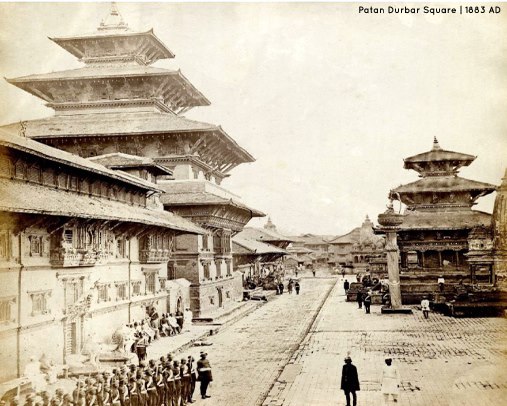
A view of Patan Durbar Square from the north in 1883 A.D.
Source: www.digitalarchaeologyfoundation.com
1901
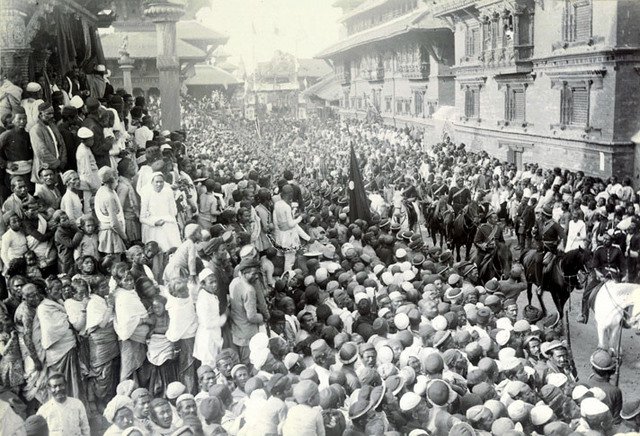
Patan Durbar Square during the visit of Prime Minister Dev Shamsher in 1901 A.D.
Source: www.digitalarchaeologyfoundation.com
1910s
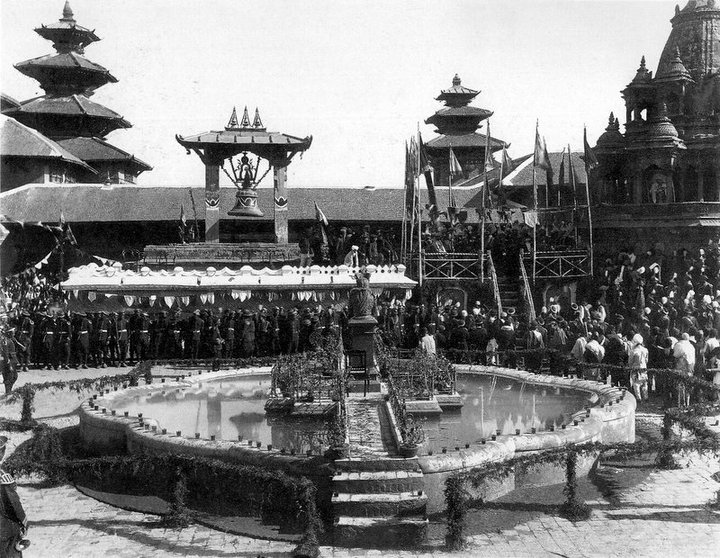
A festive occasion at Patan Durbar Square in 1910's
Source: Proksch, A. (1995). Images of a century: the changing townscapes of the Kathmandu valley.
1910s

A view of Patan Durbar Square from the noth east in the mid 1910s.
Source: Proksch, A. (1995). Images of a century: the changing townscapes of the Kathmandu valley.
1920s

Patan Durbar Square from the south, in the early 1920s.
Source: Proksch, A. (1995). Images of a century: the changing townscapes of the Kathmandu valley.
1934
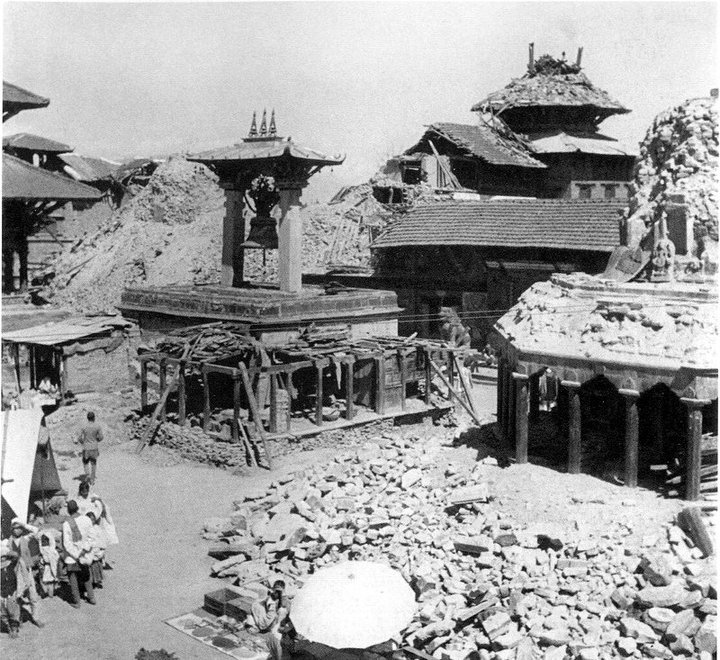
Patan Durbar Square Destroyed by massive earthquake in January, 1934.
Source: Proksch, A. (1995). Images of a century: the changing townscapes of the Kathmandu valley.
1961

Queen Elizabeth visits patan in 1961 A.D.
Source: www.digitalarchaeologyfoundation.com
1975

Patan Durbar Square from the south, in 1975 A.D.
Source: http://siuarchitecture.blogspot.com
1976
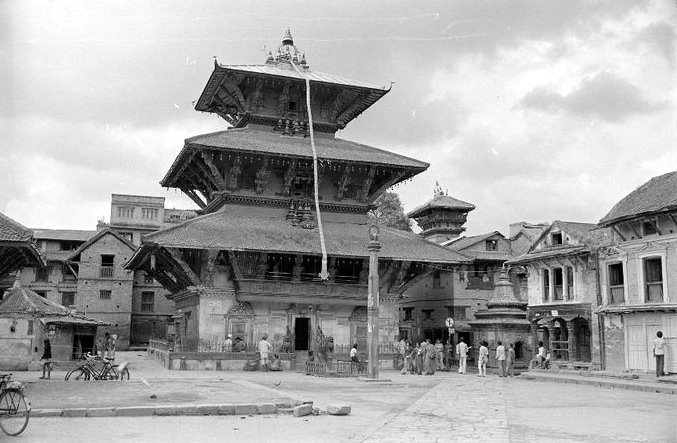
Patan Durbar Square from the east, in 1976 A.D.
Source: www.digitalarchaeologyfoundation.com
1981

An ariel view of Patan Durbar Square area documented by survey department in 1981 A.D.
Source: www.digitalarchaeologyfoundation.com
2005
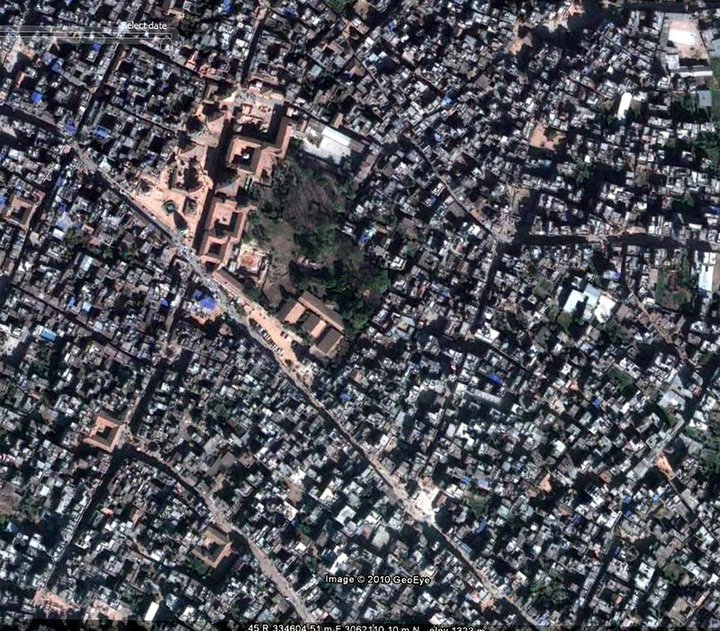
An ariel view of Patan Durbar Square area in 2005 A.D.
Source: www.digitalarchaeologyfoundation.com
2011

Patan Durbar Square from the south, in 2011 A.D.
Source: Panoramio
Before 2015
Patan Durbar Square from the south, before before 2015 earthquake.
Source: Wikimedia.org
2015

An aerial view showing the destruction and damaged buildings and monuments at the Patan Durbar square after massive Nepal earthquake (April, 2015).
Source: VosIzNeias
2015

People working at clearing the rubbles of temples at Durbar square
Source: Caritas Australia
2016

Taleju Temple, one of the monuments damaged by last April’s earthquake, is being rebuilt at Patan Durbar Square in Lalitpur.
Source: The Kathmandu Post
NOW

Ongoing reconstruction works at Patan Durbar Square.
Source: Ron and Sally Jo Blog